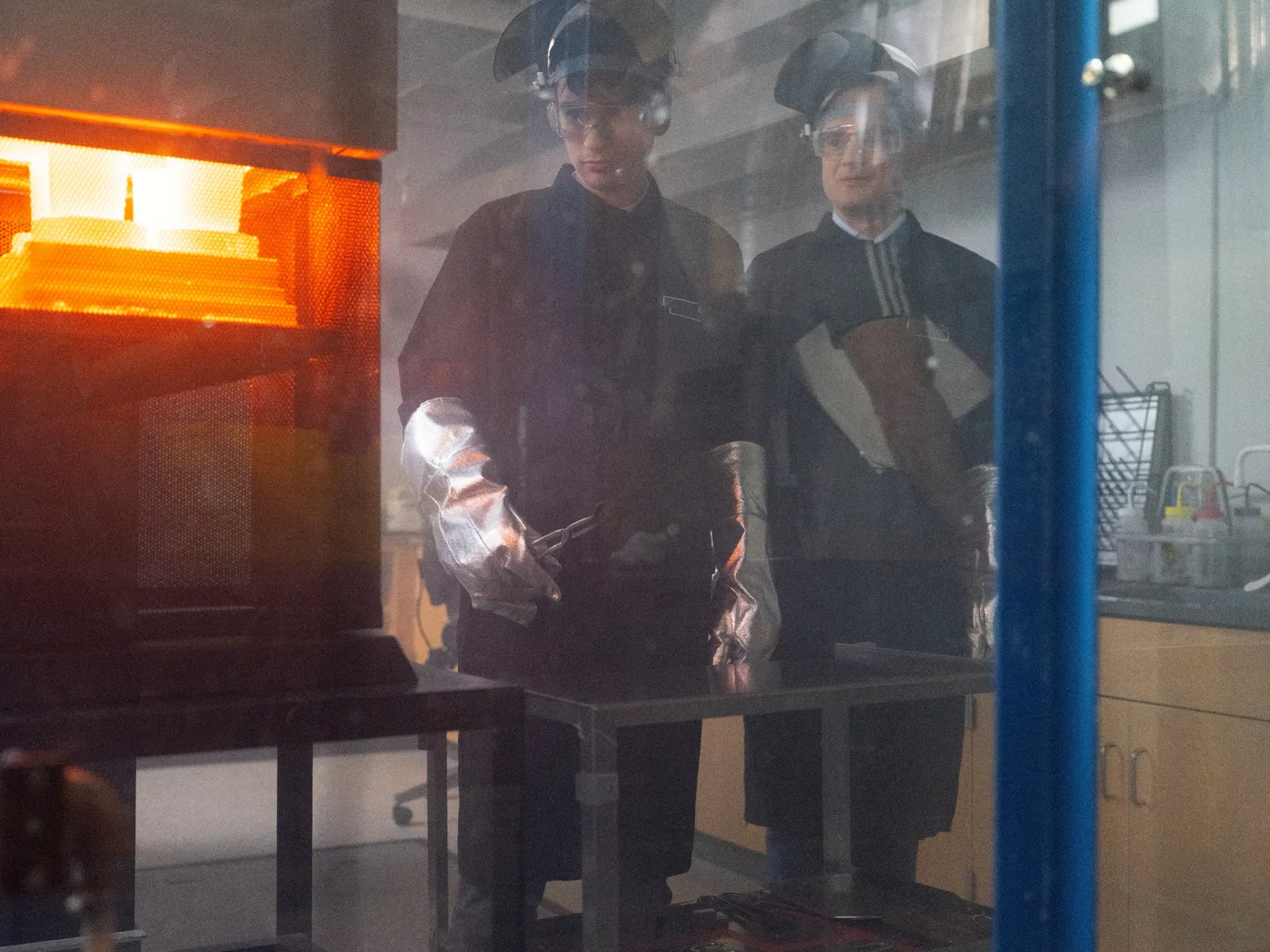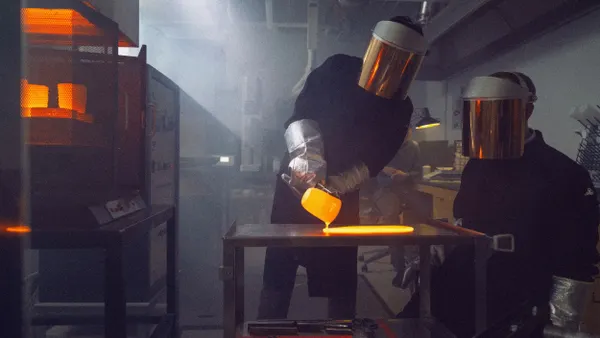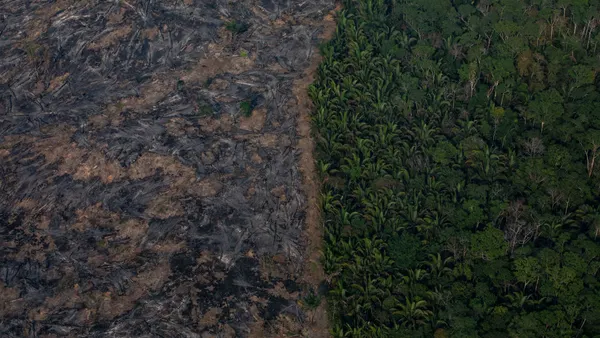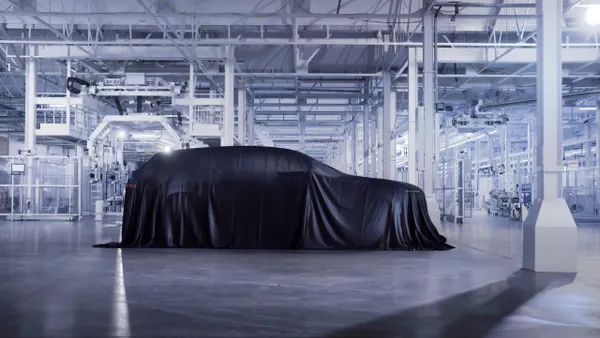Dive Brief:
- Glass packaging manufacturer Verallia entered a partnership to test and advance to market a lower-carbon glass, called LionGlass, invented by researchers at Penn State University.
- LionGlass is an aluminosilicophosphate material that melts at temperatures approximately 400 degrees Celsius lower than conventional soda lime silicate glass, saving roughly 30% on energy costs, researchers said. In addition, calcium phosphate doesn't contain carbon, “so by using that, we're taking out the CO2 from the batch,” said Nicholas Clark, assistant research professor in the Department of Materials Science and Engineering.
- Because the R&D partnership with Verallia is early stage, it will likely take a year or two to produce a prototype, said Professor John Mauro, who heads the Materials Science and Engineering Department at Penn State. “This is the first major change of glass composition within the commodity glass industry in a very long time.”
Dive Insight:
LionGlass was born in a Penn State lab that Mauro touts as “the largest academic glass research group in the country.” The researchers cover a breadth of glass topics including basic theory, design, simulation and experimental glass synthesis. Currently, six people there are working on LionGlass, a material named after the university’s Nittany Lion mascot.
“The idea here is that we need a really big step forward in terms of improving the environmental friendliness of the glass industry,” Mauro said. “We were very deliberate that what we wanted to do was to develop a low-carbon alternative to soda lime glass.”
While LionGlass began as a “smaller side project at first, we’ve grown into multiple sponsored research projects,” Clark said.
One project is a partnership with Bormioli Luigi to examine the use of LionGlass for cosmetics packaging. A recently announced project in collaboration with Verallia looks at the material’s potential use in spirits bottles. Negotiations also are underway for other projects.
Working with Verallia on packaging for high-end spirits is a “good entry point into that market because it's smaller volume and higher profit margin compared to some of the commodity beverage industry,” Mauro explained.
Part of the R&D process is to ensure LionGlass meets Verallia’s durability standards and that there's minimal interaction between the beverages and the packaging. The partners also need to make sure that LionGlass is compatible with Verallia’s existing manufacturing processes.
Certain projects are related to recycling, which the inventors cite as a key sticking point. LionGlass’ different chemical composition from conventional soda lime silicate glass raises certain end-of-life management considerations — namely that the two shouldn’t be recycled together.
“We have to make sure that we have separate recycling streams for LionGlass compared to soda lime silicates,” Mauro said, adding that one of the Ph.D. students in his group has fully dedicated her research to addressing recycling. “We are working with a partner who's actually in this industry — that makes the recycling sorting equipment — to investigate the best way for how to do this so they can update their equipment to be able to sort between the two types of glasses.”

LionGlass has been in development for approximately four years. It is visually identical to conventional soda lime glass, according to the researchers.
Landing on the current composition involved plenty of trials and failures, Mauro said. Some compositions seemed good on paper but ultimately couldn’t form glass, and some formed glass but didn’t possess the desired properties. The development of different compositions has resulted in multiple patent applications.
In addition to having a lower carbon footprint, the team’s material also exhibits “drastically improved crack resistance” compared with conventional glass, Clark said. This property could be approximately 10 times higher in LionGlass, depending on the specific composition. “Upon sharp impact, the glass is less likely to produce micro-cracks. And these micro-cracks are what is responsible for glass failing at a much lower load,” he said.
Manufacturers could use LionGlass to make packaging that has improved mechanical performance while maintaining the same weight as conventional options. Or they could make thinner packaging that has the same performance as conventional options, the researchers said.
“Thinner-wall packaging could lead to further improved environmental impact because of requiring less raw materials, less energy to make a lighter-weight package. And of course, the transportation energy costs would also be reduced,” Mauro said.
He observed these trade-offs while working at Corning for 18 years on projects including Gorilla Glass for electronics displays: Cell phone manufacturers typically wanted thinner glass for lighter phones instead of a higher-performing product with the same thickness as conventional digital screen glass.
The team plans to license LionGlass directly from the Penn State Research Foundation to established glass companies. Although they received interest from venture capitalists, the researchers don’t want to create a startup. They strive to work collaboratively with manufacturers rather than compete with them.
Yet getting glass packaging manufacturers on board for partnerships can be challenging due to the lower profit margins and higher risk aversion within the industry, Mauro said.
While some companies “would rather just be spectators” during the development process and potentially adopt a material down the road, there are incentives for companies that take a chance and invest in this technology early, he said. For instance, part of companies’ negotiations with Penn State centers on intellectual property exclusivity.
“The public views glass as being this very old material which isn't necessarily high-tech, when in reality, glass is at the forefront of materials chemistry and materials physics, and there's so much left to discover,” Mauro said. “I'm hoping that this can not only offer something really valuable to the world by itself, but also help to inspire new scientists in material science and in glass science, in particular.”












